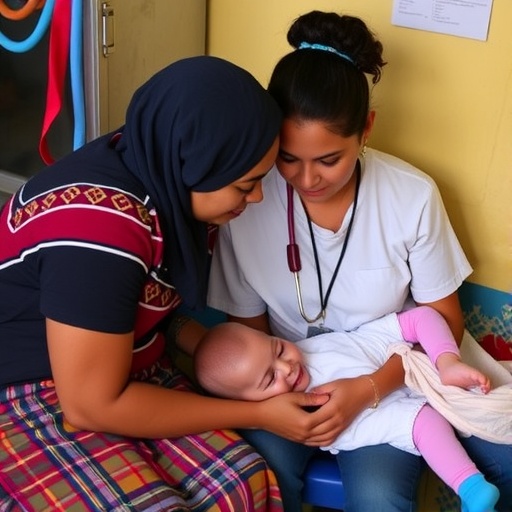In the wake of the COVID-19 pandemic, communities worldwide faced unparalleled challenges, testing the resilience of healthcare systems under tremendous pressure. The city of Quito, Ecuador, presents a compelling case study on how resilience in primary health care (PHC) can be not only preserved but strengthened through grassroots innovation. Recent research by Tello, Dueñas-Espín, and Di Giorgio offers a profound qualitative analysis of community-driven strategies that bolstered Quito’s PHC infrastructure during the crisis. This in-depth report explores the mechanisms behind such resilience, revealing lessons that could transform global health systems in a post-pandemic world.
Primary health care systems serve as the frontline defense in any public health emergency, particularly in low- and middle-income countries where access to specialized care is often limited. The study focuses on the period during which COVID-19 threatened to overwhelm local health services in Quito. The researchers provide a detailed account of the adaptive responses within PHC, emphasizing how the collaboration and ingenuity of local communities became the cornerstone of Quito’s successful pandemic management.
At the heart of Quito’s response was the mobilization of community health workers who served as vital conduits between formal health institutions and the residents they served. These workers were not only crucial for disseminating accurate information about the virus but also instrumental in monitoring the health of vulnerable populations and facilitating access to care. Their work exemplifies the principle that healthcare resilience is deeply intertwined with social context and community involvement.
One of the paramount technical aspects highlighted in the research is the integration of data-driven approaches with local knowledge. Quito’s health authorities deployed real-time epidemiological tracking mechanisms that enabled rapid identification and isolation of COVID-19 cases. However, what amplified this technology’s effectiveness was the community’s active participation in reporting symptoms and potential cases, underscoring a symbiotic relationship between health governance and grassroots engagement.
Crucially, this qualitative study explores how structural vulnerabilities—such as overcrowding, poverty, and limited infrastructure—posed significant threats to PHC resilience. However, rather than succumbing to these challenges, community innovation emerged as a powerful countermeasure. Initiatives ranged from neighborhood-level care groups coordinating deliveries of essentials to quarantined individuals, to local production of personal protective equipment (PPE), which alleviated supply shortages during critical early phases.
These community-led efforts were supported by adaptive policy frameworks from local health authorities, showcasing the importance of flexible governance during crises. The research highlights how decentralization of decision-making empowered local actors to tailor responses to their unique circumstances. This adaptive governance, paired with participatory planning, proved essential to maintaining health service continuity amid disruptions.
Another technical highlight involves the multifaceted role of digital communication platforms in Quito’s PHC infrastructure. Online forums, messaging apps, and telemedicine services were rapidly scaled to bridge gaps created by physical distancing measures. These technologies enhanced triage capacity and facilitated psychological support services, addressing not only the biomedical but also the psychosocial dimensions of pandemic resilience.
The study further brings to light the significance of trust as an intangible yet crucial asset in PHC resilience. Community trust in health providers, nurtured through prior engagement and transparent communication, proved invaluable in combatting misinformation and vaccine hesitancy. Trust catalyzed widespread adoption of health protocols, illustrating how social capital acts as a protective barrier in health crises.
Importantly, the qualitative evidence suggests that empowering marginalized groups played a key role in sustaining the PHC system. Programs that engaged indigenous and economically disadvantaged populations ensured inclusivity and equity in healthcare delivery, addressing health disparities that were exacerbated by the pandemic. These findings resonate with contemporary discourses on equity-oriented health systems.
This research also dissects the role of mental health integration within PHC strategies. Quito’s innovative approaches incorporated mental health screening and counseling as standard components of pandemic response, recognizing the psychological toll of COVID-19. Community volunteers were trained to provide basic mental health support, reducing stigma and increasing access in resource-constrained settings.
One cannot overlook the operational challenges documented by Tello and colleagues. Supply chain interruptions, workforce burnout, and infrastructural limitations posed ongoing hurdles. Nevertheless, the community’s resilience manifested through adaptive triage protocols, peer-to-peer staff support networks, and makeshift expansion of care spaces. These practical adaptations embody the concept of health system resilience as a dynamic, evolving process.
Moreover, the study scrutinizes the role of intersectoral collaboration, where health authorities coordinated with education, transportation, and social welfare sectors. This holistic approach facilitated comprehensive pandemic management, addressing social determinants of health beyond clinical care. Such cross-sector partnerships proved essential for the sustainability of PHC resilience beyond immediate crisis response.
Reflecting on future implications, the researchers advocate for embedding community innovation as a permanent pillar within PHC systems. They argue that fostering local capacity for problem-solving, supported by responsive governance and technological integration, can transform vulnerable health systems into robust, equitable networks capable of withstanding future shocks.
In conclusion, the qualitative case study of Quito’s COVID-19 response offers a blueprint for harnessing community innovation to strengthen primary health care resilience. This approach transcends conventional pandemic preparedness models by centering human agency, social cohesion, and adaptive governance. As the world recalibrates post-pandemic, these insights present a transformative vision for reimagining PHC—where communities are not merely recipients of care but active architects of health security.
The evidence from Quito is a clarion call for policymakers, health practitioners, and global health actors to invest in community-driven solutions and adaptive systems. Strengthening primary health care through such locally rooted innovation is not only a remedy for current inequities but a strategic imperative for safeguarding the health of future generations worldwide.
Subject of Research: Strengthening primary health care resilience through community innovation in response to COVID-19.
Article Title: Strengthening primary health care resilience through community innovation: a qualitative case study from Quito’s response to COVID-19.
Article References:
Tello, B., Dueñas-Espín, I. & Di Giorgio, L. Strengthening primary health care resilience through community innovation: a qualitative case study from Quito’s response to COVID-19.
Int J Equity Health 24, 266 (2025). https://doi.org/10.1186/s12939-025-02620-1
Image Credits: AI Generated




